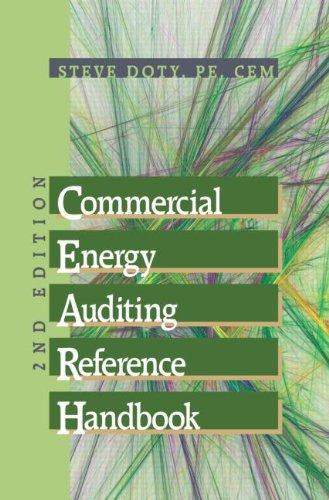ost Behavlor, Resource Usage, Excess Capacity tolertyme Company manufactures roller skates. With the exception of the olles,all arts of the skates are produced internally. Neeta Booth, president of Rolertyme, as decided to make the rollers instead of buying them from external suppliers. The company needs 100,000 sets per year (currently it pays $1 he rollers can be produced using an available area within the plant. However, equlpment for production of the roller would need to be leased ($30,000 per year lease sayment). Additionally, it would cost $0.50 per machine hour for power, oil,and other operating expenses. The equipment will provide 60,000 machine Direct material costs will average $0.75 per set, and direct labor will average $0.25 per set. Since only one type of roller would would be made on the setup activity. Other overhead activities (besides machining and setups), however, provides the following information about the current status of the overhead activities that would be affected. (The supply and demand of roller production on these activities.) The lumpy quantity indicates how much capacity must be purchased purchase price (for each block of activity). management system should any expansion of activity supply be needed. The is the cost of acquiring the capacity represented by the lumpy quantity. This price also represents the cost of current spending on Activity Price Purchasing Inspection Orders 25,000 23,000 00 $25,00o Hours 10000 ,000 2,000 30000 Moves 4,500 4,300 00 15,000o handling ion of rollers would place the following demands on the overhead activities Activity 50,000 machine hours 2,000 purchase orders (assoclated with raw materials used to make the rollers) 750 inspection hours 500 moves Purchasing Inspection Materials handling Producing the rollers also means that the purchase of outside rollers will cease. Thus, purchase orders associated with the outside acquisition of rollers will drop by 5,000. Similarly, the moves for the handling of incoming orders will decrease by 200. The company has not inspected the rollers purchased from outside suppliers Required: 1. Using the questions below, classify all resources associated with the production of rollers as flexible resources and committed resources and as a short or long-term a. Direct materials, direct labor and machine operating costs would be classified as: flexible r spending (for all activities except for setups) that the company will Icur after production of the rollers begins. Break this cost 2. Calculate the total annual resource spending (for all activities except for se into fixed and variable activity costs. In calculating these figures, assume that the company will spend no more than necessary Fixed Cost Variable Cost Total Cost What is the effect on resource spending caused by production of the rollers? 3. Refer to Requirement 2. For each activity, break down the cost of activity supplied into the cost of activity output and the cost of unused activity Activity Machining Purchasing Cost of Activity Supplied Cost of Activity Used Cost of Unused Activity Cost as decided to make the rollers instead of buying them from external suppliers. The company needs 100,000 sets per year (currently it pays $1.90 per set of ent). Additionally, it would cost s0.50 per machine hour for power, olil, and other operating expenses. The equipment will provide 60,000 machine hours per year Direct material costs will average $0.75 per set, and direct labor will average $0.25 per set. Since only one type of roller would be produced, no additional demands would be made on the setup activity. Other overhead activities (besides machining and setups), however, would be affected. The company's cost system about the current status of the overhead activities that would be affected. (The supply and demand figures do not include the effect of roller production on these activities.) The lumpy quantity indicates how much capacity must be purchased should any expansion of activity supply be needed. The purchase price is the cost of acquiring the capacity represented by the lumpy quantity. This price also represents the cost of current spending on existing activity Cost Driver Supply Usage Quantity Purchase Orders 25,000 23,000 5,000 $25,000 Hours 10,000 9,000 2,000 30,000 Moves 4,500 4,300 Lumpy Activity Price Purchasing Inspection Materials handling Production of rollers would place the following demands on the overhead activities Activity Machining Purchasing 500 15,000 Resource Demands 50,000 machine hours 2,000 purchase orders (associated with raw materials used to make the rollers) 750 inspection hours 500 moves Inspection Materials handling Producing the rollers also means that the purchase of outside rollers will cease. Thus, purchase orders associated with the outside acquisition of rollers will drop by 5,000. Similarly, the moves for the handling of incoming orders will decrease by 200. The company has not inspected the rollers purchased from outside suppliers. b. Machining would be classified as: long-term committed resources v c. Purchasing, inspection and materials handling would be classified as: short term committed resources V the total annual resource spending (for all activities except for setups) that the company will Incur after production of the rollers begins. Break into fixed and variable activity costs. In calculating these figures, assume that the company wll spend no more than necessary Fixed Cost Variable Cost Total Cost Variable Cost Total Cost What is the effect on resource spending caused by production of the rollers? Decrease - 3. Refer to Requirement 2. For each activity, break down the cost of activity supplied into the cost of activity output and the cost of unused activi Cost of Activity Supplied Cost of Activity Used Cost of Unused Activity Activity Machining Purchasing Inspection Materials handling













